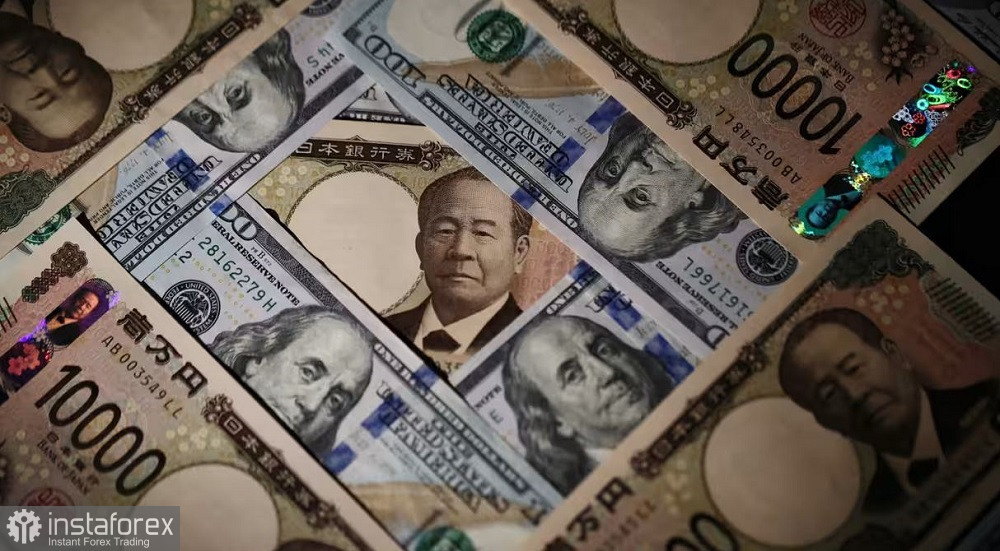This week, the USD/JPY pair reached a nearly three-month high at 153.20. The last time the yen was in this price range was at the end of July. At that time, the price was in a downtrend, declining from the 161.70 level. Now, however, the pair has shifted to an upward trend—since mid-September, USD/JPY has been actively and steadily rising. In just six weeks, the pair has gained over a thousand points, climbing from the 140.00 level to the current 152-153 range.

Given the current fundamental backdrop, it makes sense to use the present corrective pullback as an opportunity to open long positions. However, there's one major caveat—the parliamentary elections in Japan, scheduled for October 27. Uncertainty remains surrounding the outcome, and the political stakes are high. For instance, some observers believe that current Prime Minister Shigeru Ishiba, appointed just last month, may lose his position. If that happens, the entire administrative structure he has built could be dismantled.
We'll discuss the political implications of the parliamentary elections further below, but for now, let's focus on the "classic" fundamental factors that also do not bode well for the yen.
Tokyo CPI and Its Market Impact
Today, Japan released the important inflation indicator—the Tokyo Consumer Price Index (CPI). USD/JPY traders reacted weakly to this release, but it will likely become more relevant next week, once the parliamentary elections are over, and attention will turn to the Bank of Japan's October meeting, with the outcome set for announcement on October 31.
The Tokyo CPI, a leading indicator for price trends across the country, provides insights from the October data released today.
The overall Tokyo CPI reached its peak this summer (in August) at 2.8%, but then it began to slow significantly. It came in at 2.1% in September and 1.8% in October, marking the slowest growth rate since April of this year.
The core Tokyo CPI, excluding fresh food prices, showed an upward trend for four months—from May to August—but then reversed sharply. It dropped to 2.0% in September and 1.8% in October.
Today's release complements last week's report on overall national inflation. Last month, the national CPI slowed to 2.5% (the slowest growth since April of this year), while the core CPI, which is closely monitored by the Bank of Japan, slowed to 2.4% (the lowest level since April), following four months of consecutive growth.
What Do These Inflation Reports Indicate?
Primarily, they suggest that the Bank of Japan may not rush into the next round of interest rate hikes. Governor Kazuo Ueda had already hinted at this verbally before the inflation data was released. Now, it's more certain that any rate hike decision will be delayed until at least January 2025.
Politics could also play a role here. The market increasingly believes that the results of Sunday's parliamentary elections could hinder the Bank of Japan's efforts to normalize monetary policy. The lower house of parliament consists of 465 seats, and before it was dissolved, the ruling coalition (the Liberal Democratic Party and Komeito Party) held an absolute majority (233 seats). According to some polls, the ruling coalition partners might not secure the required minimum in the upcoming elections. This could lead to a scenario where a minority coalition is formed in the lower house.
Political instability is already a reason for the Japanese central bank to pause (not to mention the slowdown in inflation figures). Additionally, many opposition members, who could potentially join the ruling coalition, are advocating for measures to increase wages (such as implementing expansionary fiscal and monetary policies to achieve higher wage growth). According to some currency strategists, if such proposals are incorporated into new economic policies, the Bank of Japan might pause rate hikes until at least spring of next year.
These forecasts align with the views of economists surveyed by Reuters. Most of them believe that the Japanese central bank will not raise interest rates again this year, and they expect the central bank to revisit the issue in the spring of 2025, most likely in March.
What Does This Mean for the Yen?
It suggests that the yen currently lacks independent strength. A sustained downtrend in USD/JPY is only possible if there is a significant weakening of the U.S. dollar. Meanwhile, the U.S. Dollar Index remains stable around the 104 mark, supported by cautious comments from Federal Reserve representatives (who advocate for a gradual pace of monetary policy easing) and anticipation of key macroeconomic reports due next week (including the core PCE index, U.S. GDP growth data for Q3, and October's Nonfarm Payrolls).
Thus, it is advisable to use corrections in the USD/JPY pair to open long positions. But this should be done after the results of the parliamentary elections on Sunday. Next week, the pair may gain additional upward momentum if the ruling coalition fails to secure an absolute majority.
From a technical standpoint, the pair is positioned on the daily chart between the middle and upper lines of the Bollinger Bands indicator, as well as above all lines of the Ichimoku indicator, which has formed a bullish "Kumo Twist" signal. The first target for upward movement is 153.70, which is the upper line of the Bollinger Bands on the same timeframe.
 English
English 
 Русский
Русский Bahasa Indonesia
Bahasa Indonesia Bahasa Malay
Bahasa Malay ไทย
ไทย Español
Español Deutsch
Deutsch Български
Български Français
Français Tiếng Việt
Tiếng Việt 中文
中文 বাংলা
বাংলা हिन्दी
हिन्दी Čeština
Čeština Українська
Українська Română
Română

